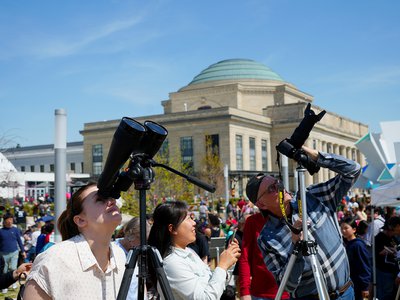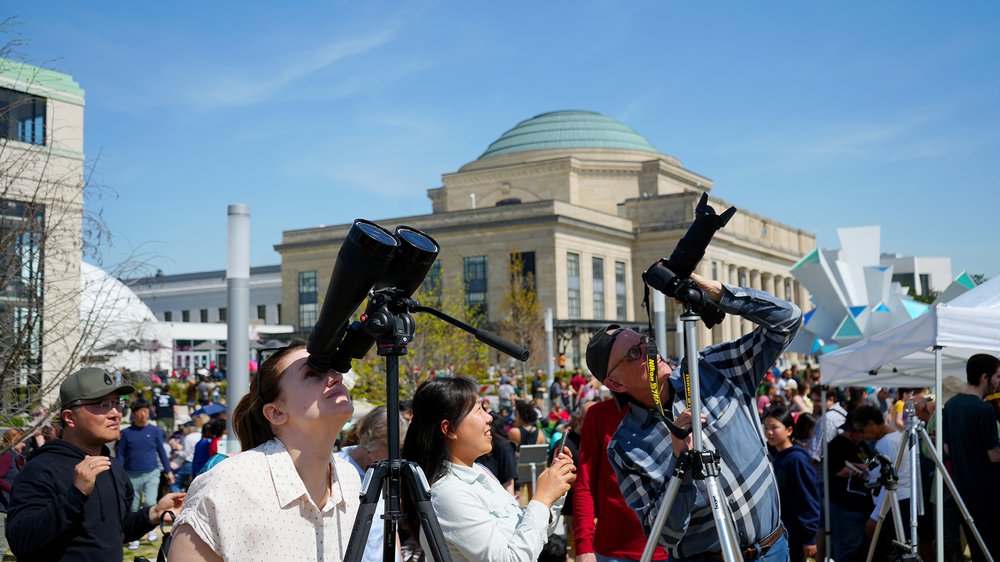Anyone can participate in science!
Participatory science is a collaboration between scientists and public volunteers to gather new knowledge about the world. Participatory science includes community science, citizen science, community-based monitoring and other types of research that depend on knowledge, insights or observations from the public.
Participatory science can transform communities, advance research and help people across the globe. For example, over the last 10 years, 31,000 volunteers have classified 350,000 images of space! You don't have to be an expert to get involved in a project. With a wide variety of topics to choose from, there’s something for all ages. You can also join in as frequently as you're able.
Explore the Latest Participatory Science Opportunity — Project Squirrel
Squirrels are common urban wildlife in the Eastern United States. Squirrels are fascinating animals to observe and Virginia is home to several different types of these busy critters! The easiest to spot is certainly the Eastern gray squirrel, which is well-suited to urban areas. Gray squirrels may sometimes be spotted with different fur colors such as black or white. Other squirrels in Virginia to observe include the smaller red squirrel, fox squirrels—the largest tree squirrel in North America—and two species of flying squirrels. Flying squirrels are nocturnal, so you may not have noticed them (but they have inspired the name of our local Minor League Baseball team).
Project Squirrel’s goals are to understand more about tree squirrel ecology and to understand the effect that participatory science has on you and the quality of data! Project Squirrel focuses on gray, fox and red squirrels and the environment of your observations.
Project Squirrel’s goals are to understand more about tree squirrel ecology and to understand the effect that participatory science has on you and the quality of data! Project Squirrel focuses on gray, fox and red squirrels and the environment of your observations.
To participate, head outside! You can observe squirrels anywhere, from your backyard to a park or parking lot! Note what kind of squirrels you see and how many of each kind. Snap a picture or two if you want. Next, observe what kind of trees are around, what the environment looks like and if you see any cats and dogs.
Once you’re ready, upload your observations to Project Squirrel. We’ve provided a guide to reference for additional squirrel-ific tips in your search around the area!
Ongoing Participatory Science Opportunities
There’s no shortage of discoveries left to be made. Visit scistarter.org, zooniverse.org and citizenscience.gov to check out dozens of other participatory science opportunities. There’s something for everyone!


Participatory Science at the Science Museum
The Science Museum’s 2017 project Throwing Shade mobilized volunteers and partners from around Richmond to evaluate urban heat vulnerability. Data collected helped show that temperatures in the city during a heat wave can vary as much as 16 °F from the coolest to the warmest places.
From 2019 through 2023, volunteers helped the Science Museum collect data about hyperlocal air quality as part of RVAir. Funded in part by the Institute of the Museum and Library Services, RVAir worked with community collaborators to help measure particulate matter in Richmond neighborhoods.
Using portable AirBeam devices, community members collected air quality data on over 600 walks throughout the Richmond area. Additionally, over 35 permanent Purple Air sensors were installed across the city and are continuing to collect air quality in real time.